
Guide
How to clean your oven
by Raphael Knecht

Your fridge is on duty 24 hours a day. So, don’t forget to treat it to the maintenance it deserves from time to time. That way it’ll stay clean and efficient and keep your food appetising.
On a hot day, there’s nothing better than wetting your throat with an ice-cold drink straight out of the fridge. Or heating up last night’s leftover pizza for lunch. Whatever you use your fridge for, it’s undoubtedly one of the most go-to kitchen appliances alongside the oven. But what if you hardly dare open the fridge door because it stinks inside? What if mould, germs, bacteria and other residues are forming on the shelves, walls and in the door shelf trays? Then it’s about time you emptied your fridge and gave it a deep clean. With the right tools and a few helpful tips, your fridge will be clean and smell good again in no time.
If you empty something out of the fridge or see any dirt, wipe the area straight away with a cleaning cloth or cleaning sponge. You’ll also need a microfibre cloth to remove fingerprints, streaks and other marks from the outside of the fridge. It can be advantageous to use a household cleaner as well in order to remove stubborn dirt and smells. You can either opt for a specific fridge cleaner or any kitchen cleaner. Tea towels and kitchen roll are good for drying the fridge. If you’d rather use natural remedies instead of chemical detergents, you’ll need to have vinegar or lemon at hand. For targeted use, pour your homemade cleaner into a spray bottle. If you find the dirt in the fridge disgusting or if you have sensitive skin, I’d recommend wearing gloves while you’re cleaning.
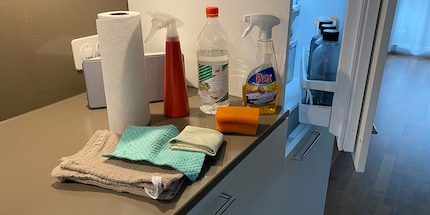
It hardly takes a minute to wipe away marks, leftovers or crumbs. But a lot of people don’t bother doing it. That’s why it’s important to always remove any mess at the time. For instance, if you spill a bit of sauce in the fridge, wipe it away there and then. Otherwise it’ll form bacteria or germs that can lead to nasty smells. Even if you take an exemplary approach and clean everything straight away, you should still clean your fridge from top to bottom regularly. I recommend giving your fridge a thorough clean like this every two months. If you always keep it at a high standard, it’s enough to give it a deep clean every three months. If you’re always stressed and don’t have time to wipe off individual marks, you’ll need to give your fridge a proper clean once a month. This should take one to two hours, depending on how dirty the appliance is. Got a frozen food compartment built into your fridge? You’ll need to defrost it every six months. Or at the latest when the layer of ice is more than 1 cm deep. The same goes for a stand-alone freezer. It should take half a day for the freezer to defrost and be cleaned out.
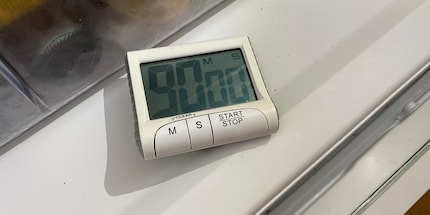
As well as wiping away marks straight away, it also helps to take out the vegetable drawer regularly and remove any residue. As the drawer is closed, it’s often a breeding ground for mould, germs and bacteria. It’s important that your fridge is empty when you clean it out so you can really see all the dirt and remove it. That’s why you need to make sure you have space in advance to temporarily store all your food. For instance, a cold basement, or in winter, a balcony or terrace work well. If you have a second fridge in the basement then that’s obviously ideal. Alternatively, one or more cool boxes with cooling elements can do the trick. What’s more, I recommend turning off the fridge while you’re cleaning it and unplugging it from the mains for safety and environmental reasons. Incidentally, deep cleaning is also a good time to check if there’s any out-of-date food lying in the fridge that you’ve forgotten about.
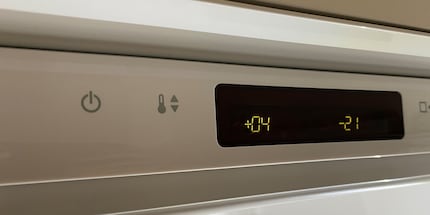
If your fridge isn’t fitted into your kitchen configuration, you should also clean the back of it. To do this, pull it away from the wall and vacuum clean the metal grill at the back of the fridge thoroughly from top to bottom. When the grill is dusty, it’s difficult for the fridge to conduct heat out from the inside of the fridge. You don’t need to do this if your appliance has been installed as a fixed part of your kitchen. Simply switch the fridge off, remove all the food and empty out all of the drawers, shelves and trays. You can either clean them by hand in the wash basin using warm water, washing-up liquid and a sponge or – if it’s possible – stick them in the dishwasher.
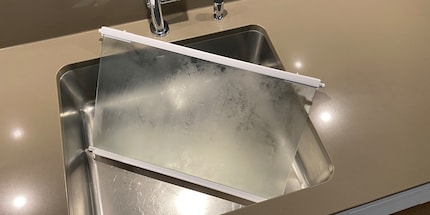
Once the fridge is empty, start by giving the interior walls a good clean from top to bottom. Use a sponge for stubborn marks and a cleaning cloth for regular dirt. Pay particular care to the rubber seal around the fridge door. That’s where crumbs and congealed liquid can accumulate quickly. In turn, this can breed germs and bacteria. So, it’s best to clean around the seal carefully. But don’t use any cleaning products that are too aggressive, as acid could attack the rubber and damage it. Then clean all the surfaces, the vegetable drawer and the trays in the door. Next, clean all the surfaces again – but this time just with water and no cleaner. Finally, dry everything with a microfibre cloth. This helps to remove any streaks and other marks on shiny surfaces. Ideally, you’ll leave the fridge open for three to four hours so it can dry completely and allow any smells to dissipate. But that’s only if your food can stay cool for long enough in its temporary storage place.
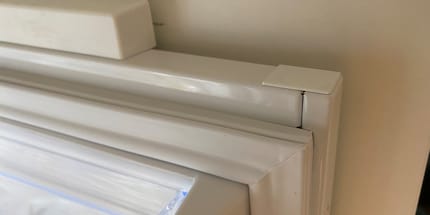
Each time you clean the fridge, don’t forget to clear out the outlet for condensation that’s at the bottom back of the appliance. If you don’t clean it out regularly, crumbs and other food waste can gather there, blocking the outlet. That then stops water from running off, instead flowing onto the shelves or into the vegetable drawer. So, how do you clean it out? You’ll either find a sieve in the hole, which you can just pull out to clean and remove the filtered muck, or you can use a cotton wool bud to help clear the build-up. In doing so, you remove the grime without damaging the fridge. If you want to avoid chemical detergents, home remedies can also help when it comes to cleaning the fridge. Take vinegar, for example. If you mix one part vinegar to two parts warm water and pour the solution into a spray bottle, you’ll be able to remove the grime just as easily. As well as cleaning, vinegar also neutralises smells and acts as a disinfectant. Lemon water has the same effect. Mix one part of the juice of two lemons with one part warm water. It’s also best to decant this mixture into a spray bottle so it’s easier to use.
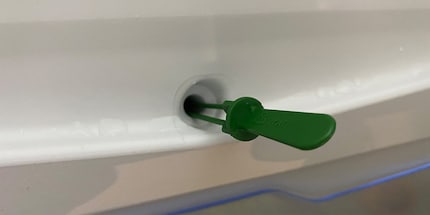
After cleaning and drying the shelves, trays and drawers, you can put them all back in the fridge. Then switch the fridge back on and wait until the inside temperature drops close to the level you’d set it at before putting all the food back. A lot of fridges offer a special fast-cool feature specifically for this, which makes the temperature drop significantly within a short space of time. When you’re putting everything back, make sure you don’t try and fit too much food in the fridge. Not everything needs to be kept cool. For instance, in shops, a lot of fruit isn’t stored in chill cabinets. If you fill the fridge too full or if certain items touch the back wall, this can affect air circulation within the fridge. This reduces the spread of cooling and lessens the appliance’s overall cooling performance. To prevent unpleasant smells forming inside the fridge, it helps to leave half a lemon with a bit of bicarbonate of soda, half an apple or some uncovered coffee beans in the fridge.
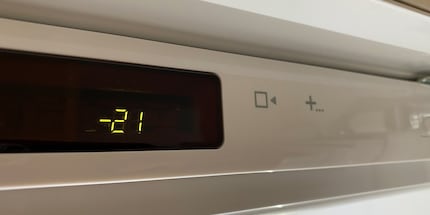
If the built-in freezer compartment in your fridge or separate freezer is fairly iced over, the appliance will use a lot more energy. That’s why you shouldn’t leave defrosting the compartment any later than when the layer of ice is more than 1 cm deep. The process involves clearing everything out and storing it in another freezer compartment, freezer or chest freezer. If your freezer compartment is built into the fridge, it’s worth defrosting it at the same time as you’re cleaning out the fridge. That’s because you need to unplug the appliance in order to defrost the freezer or freezer compartment. Then put towels or tea towels down in the compartment to soak up the defrosted water. If the compartment is at the bottom of the fridge or if you have a separate freezer, you can just put a bowl underneath to catch the water. To speed up the process, you can put a bowl of warm water in the freezer or use a hairdryer to blow hot air into it. Never use sharp objects to scrape out the ice as this could cause damage. As soon as all the ice has defrosted, clean out the compartment or the whole freezer with a sponge and warm water. You can use a bit of washing-up liquid on stubborn marks. Don’t skip this bit: only turn the appliance back on when the inside is completely dry. Otherwise it’ll start to form a new layer of ice straight away. What’s more, you should only put food back in the freezer once the appliance has returned to its set temperature.
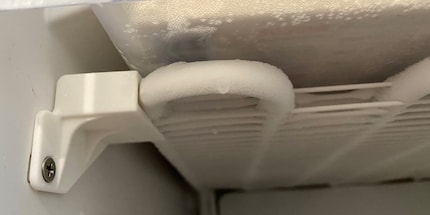
When I'm not stuffing my face with sweets, you'll catch me running around in the gym hall. I’m a passionate floorball player and coach. On rainy days, I tinker with my homebuilt PCs, robots or other gadgets. Music is always my trusted companion. I also enjoy tackling hilly terrain on my road bike and criss-crossing the country on my cross-country skis.
Practical solutions for everyday problems with technology, household hacks and much more.
Show all